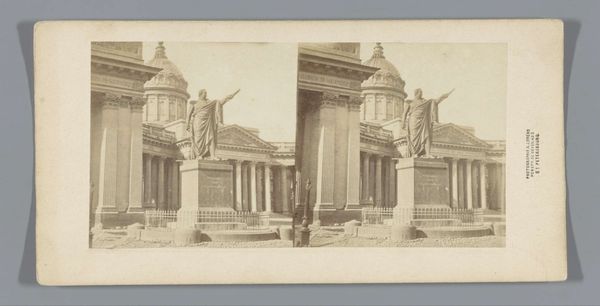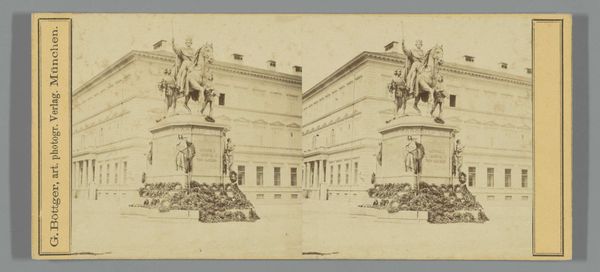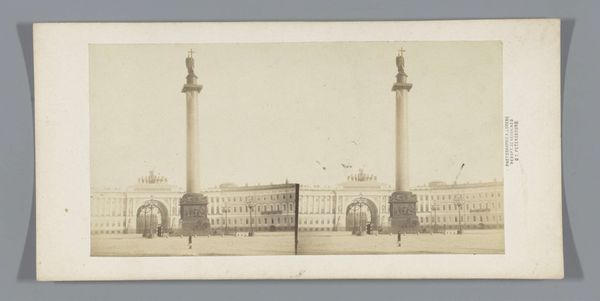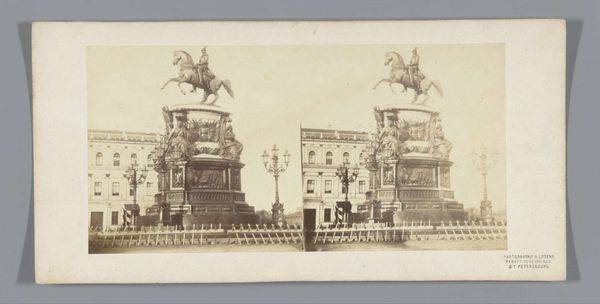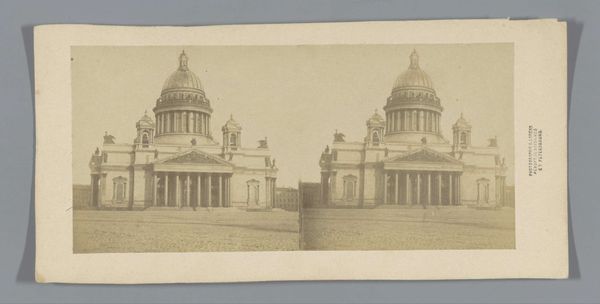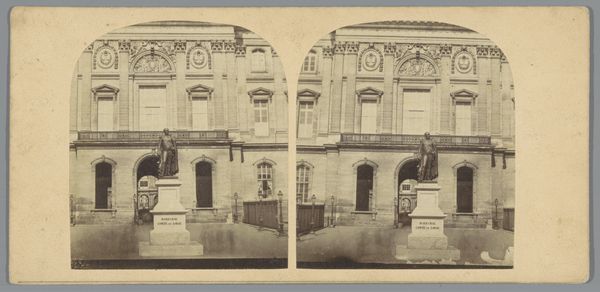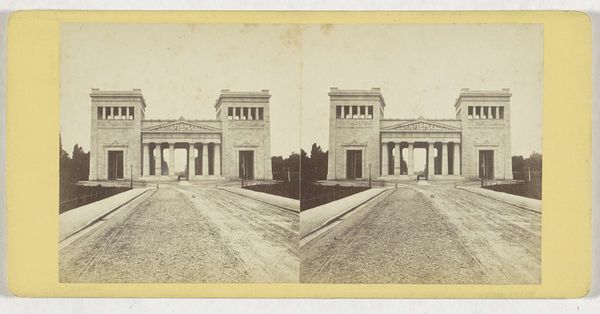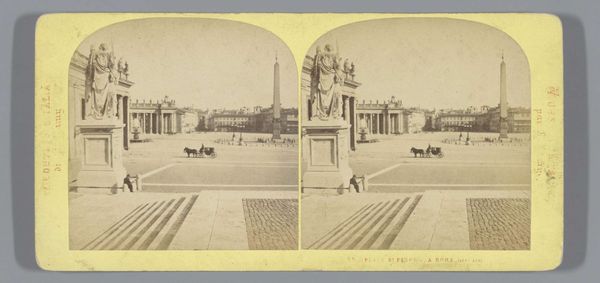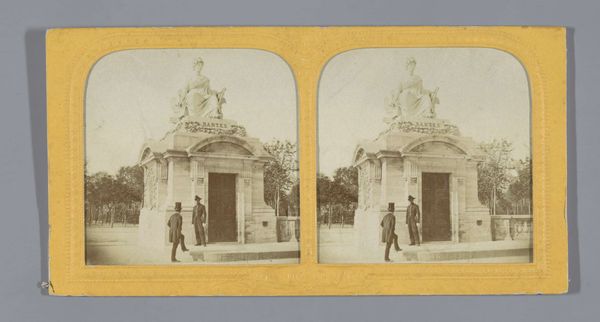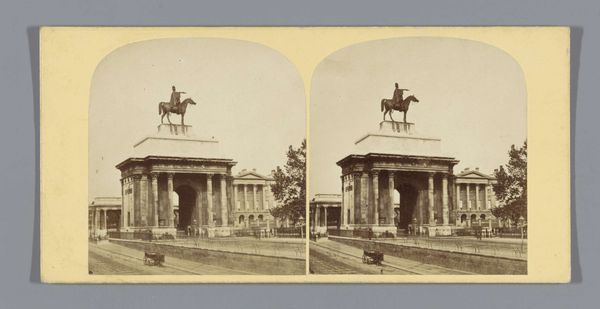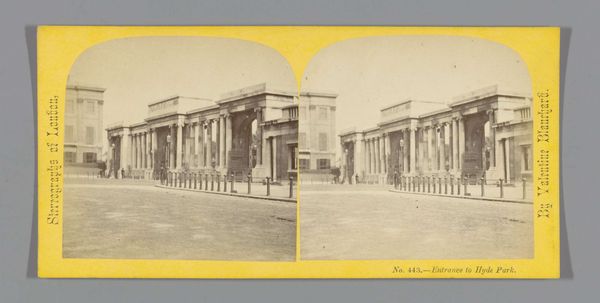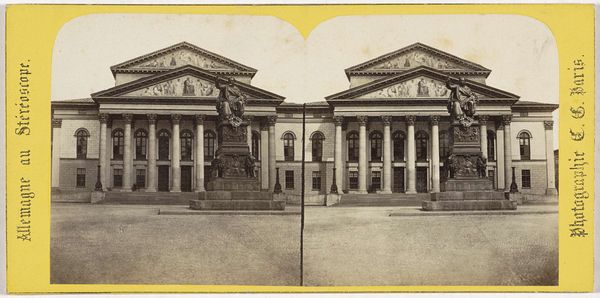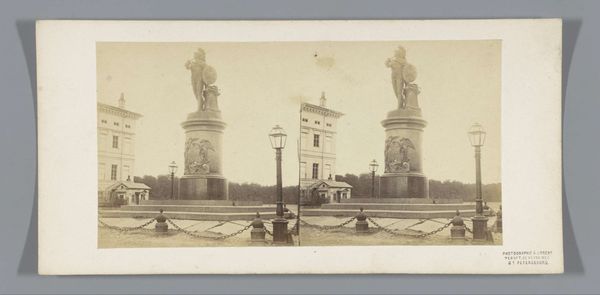
Gezicht op de Kazankathedraal in Sint-Petersburg met een monument voor veldmaarschalk Michail Koetoezov ervoor c. 1860 - 1880
0:00
0:00
Dimensions: height 85 mm, width 170 mm
Copyright: Rijks Museum: Open Domain
Editor: Here we have Alfred Lorens’ photograph "View of the Kazan Cathedral in St. Petersburg with a monument to Field Marshal Mikhail Kutuzov in front," dating from around 1860-1880. It's quite striking how the monument in the foreground seems to almost mirror the cathedral's dome in the background, in a powerful way. What do you see in this piece? Curator: I see a careful construction of historical memory. Note how Lorens positions Kutuzov, a military hero, before the Kazan Cathedral, itself laden with religious and national significance. It's not merely a cityscape but a deliberate layering of symbolic power. Do you feel that layering? Editor: Absolutely! I guess it's hard *not* to! It feels almost staged, rather than simply captured, and it certainly invites you to ask what ideas the artist is trying to convey! How do you interpret that interplay between the statue and the architecture? Curator: The statue directs our gaze upwards to the cathedral, connecting military glory with divine blessing. Consider also that Kutuzov led Russia to victory against Napoleon. This photograph, taken decades later, serves as a potent reminder of Russia's strength, both earthly and spiritual. Is it propaganda, perhaps? Editor: Hmmm, I hadn't thought of propaganda but that actually makes a lot of sense! I was viewing it from the position of aesthetic enjoyment, but it certainly seems to make a bold political statement. I’d never considered photography as being propagandistic in this era before, but I think it adds another important dimension to my understanding of nineteenth-century photographs as carriers of complex symbolism. Curator: Indeed. Photography wasn't merely documenting; it was actively shaping collective memory and reinforcing cultural narratives. This work offers us a powerful glimpse into that process. Editor: Well, thank you for your insights! That was incredibly helpful and certainly made me reconsider my perspective on 19th-century photography.
Comments
No comments
Be the first to comment and join the conversation on the ultimate creative platform.
